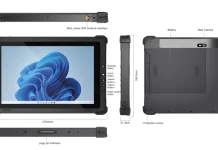In the realm of logo digitizing, where precision and detail are paramount, the significance of fabric selection cannot be overstated. Every material possesses its own unique characteristics, which can greatly impact the outcome of digitized logos embroidered onto them. From the texture to the density, each fabric interacts differently with the embroidery process, making it crucial for designers and embroiderers to carefully consider their choices. In this article, we delve into the reasons why fabric selection matters in logo digitizing, and how it can ultimately affect the quality and appearance of the final product.
1. Texture Matters:
One of the primary considerations when digitizing a logo onto fabric is its texture. Different fabrics possess varying textures, ranging from smooth and silky to rough and textured. The texture of the fabric can influence how the stitches interact with the surface, affecting the clarity and definition of the logo. For instance, a logo embroidered on a smooth satin fabric may appear more refined and detailed compared to the same logo embroidered on a rougher canvas material.
2. Density and Thickness:
The density and thickness of the fabric also play a crucial role in embroidery logo digitizing. Thicker fabrics typically require longer stitches or increased thread density to ensure that the design remains legible and visually appealing. Attempting to embroider a complex logo with intricate details on a thin, lightweight fabric may result in the stitches pulling or puckering the material, leading to a distorted or messy appearance.
3. Stretch and Stability:
Fabrics with stretch, such as knits and jerseys, pose a unique challenge in logo digitizing. These materials have a tendency to stretch and distort during the embroidery process, making it essential to use stabilizers to maintain the integrity of the design. Failure to properly stabilize stretchy fabrics can result in misaligned stitches and a distorted logo. Conversely, rigid fabrics offer greater stability and are generally easier to digitize logos onto.
4. Color and Contrast:
The color and contrast of the fabric can significantly impact the visibility and effectiveness of the embroidered logo. Light-colored fabrics tend to showcase darker thread colors more prominently, while dark-colored fabrics may require lighter thread shades for the design to stand out. Additionally, patterns and textures in the fabric can either complement or compete with the embroidered logo, influencing its overall aesthetic appeal.
5. Durability and Longevity:
Another crucial factor to consider in fabric selection for logo digitizing is durability and longevity. The choice of fabric should align with the intended use and lifespan of the embroidered product. Fabrics intended for high-wear items, such as uniforms or workwear, require materials that can withstand frequent washing and abrasion without compromising the integrity of the logo. Selecting a durable fabric ensures that the embroidered logo remains crisp and vibrant over time.
Why Do You Need Embroidery Logo Digitizing Service?
In conclusion, fabric selection plays a pivotal role in the success of logo digitizing for embroidery projects. Designers and embroiderers must carefully evaluate the texture, density, stretch, color, and durability of the fabric to achieve optimal results. By understanding how different fabrics interact with the embroidery process, professionals can ensure that the final product accurately reflects the integrity and quality of the original logo design. Ultimately, attention to fabric selection enhances the overall appearance and longevity of embroidered logos, making them more impactful and visually appealing to the end consumer.

























![InstaPro APK Download Latest Version 2023 [Anti Ban]](https://olo.my.id/wp-content/uploads/2023/10/instapro-100x70.jpg)

